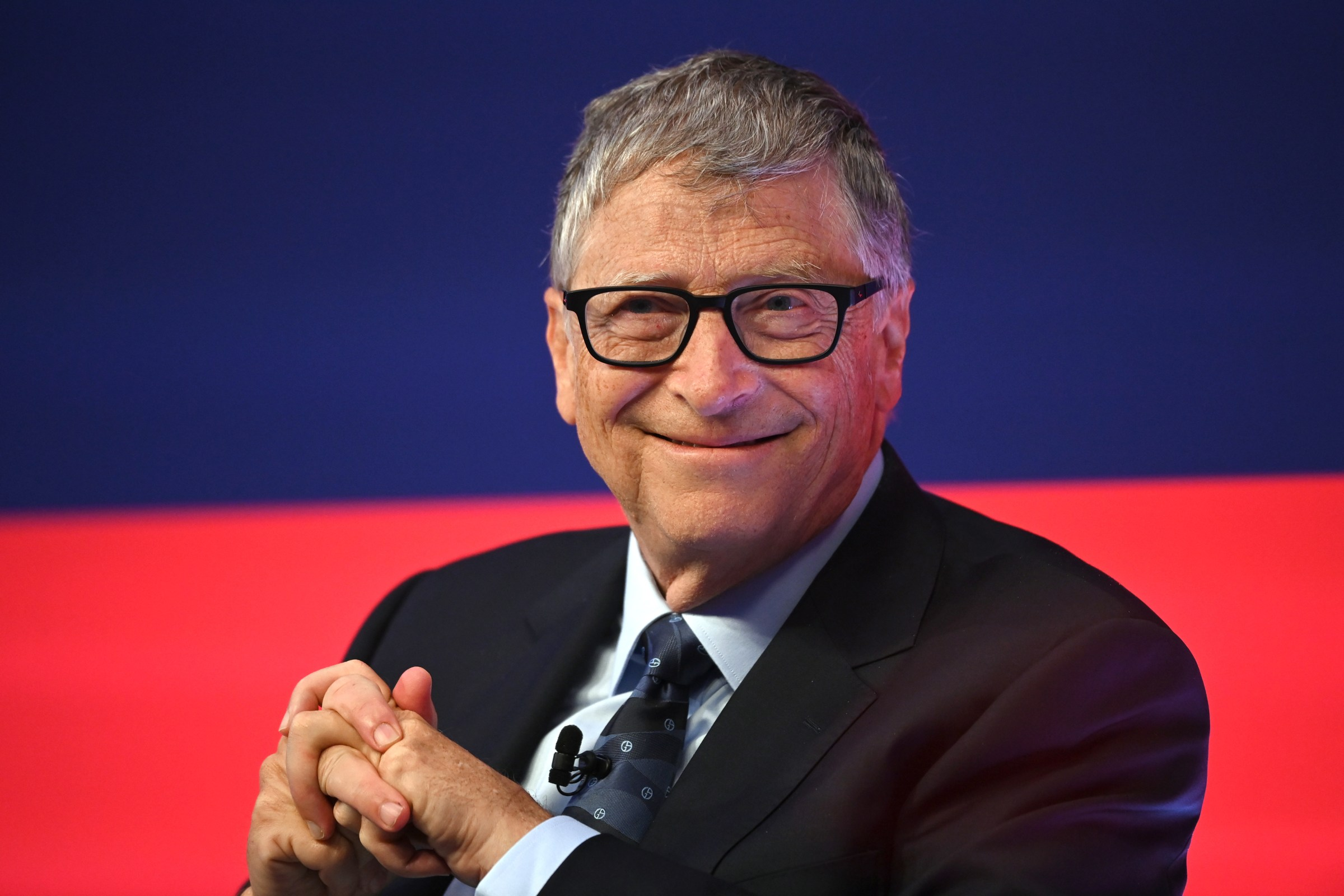Bill Gates, the name synonymous with tech brilliance and billionaire status, continues to dominate headlines in 2025 with a staggering net worth of $180 billion. From co-founding Microsoft to owning America’s largest farmland portfolio, Gates’ financial empire is a masterclass in wealth-building. But how did a Seattle-born programmer become one of the world’s richest men? And what’s fueling his fortune today? Buckle up as we dive into the jaw-dropping details of Bill Gates’ net worth in 2025, his business ventures, lavish real estate, and the philanthropy that’s reshaping his legacy.
How Much Is Bill Gates Worth in 2025?
As of 2025, Bill Gates’ net worth stands at an eye-popping $180 billion, making him one of the top five richest people on the planet, according to Forbes. While many assume his wealth is tied solely to Microsoft, that’s only part of the story. Gates owns 103 million shares of Microsoft, valued at approximately $38 billion (assuming a $370 share price). The remaining $142 billion comes from his diversified investments through Cascade Investments, his private investment vehicle.
Here’s a quick breakdown:
- Microsoft Shares: $38 billion (1.3% of the company)
- Cascade Investments: Over $100 billion in assets, including farmland, hotels, and stocks
- Dividends: $309 million annually from Microsoft alone
- Other Assets: Real estate, private jets, and rare collectibles like the Codex Leicester
Gates’ wealth has grown steadily, even after donating billions to charity. In 1999, his net worth briefly hit $100 billion, equivalent to $153 billion today after inflation. Had he never given a dime to charity, Forbes estimates his fortune could be $175 billion today. Curious about how he got here? Let’s rewind to the beginning.
Early Life: The Nerd Who Changed the World
Born October 28, 1955, in Seattle, Washington, William Henry Gates III was a curious, introverted child. Bullied as a kid, he’d retreat to his room, shouting, “I’m thinking!” when his mom checked on him. At 13, Gates enrolled at Lakeside School, where he discovered his passion for programming. Using funds from the school’s Mothers’ Club, Lakeside bought a Teletype terminal, and Gates wrote his first program—a tic-tac-toe game that let players compete against the computer.
Gates, alongside friends Paul Allen, Ric Weiland, and Kent Evans, formed the Lakeside Programmers Club, hustling for extra computer time by finding software bugs. By high school, Gates and Allen launched Traf-O-Data, a traffic-counting business using Intel’s 8008 processor. Though it wasn’t a blockbuster, it foreshadowed their entrepreneurial grit. Gates later enrolled at Harvard but dropped out in 1975 to chase a bigger dream—Microsoft.
“Bill was always thinking big, even as a kid. He saw computers changing the world before most people did.” — Paul Allen, Microsoft co-founder (via Forbes)
Microsoft: The Empire That Started It All
In 1975, Gates and Allen seized their moment when they saw the MITS Altair 8800, a microcomputer based on Intel’s 8080 CPU. After bluffing their way into a deal with MITS, they developed the Altair BASIC interpreter, launching Microsoft. By 1977, Microsoft had an office in Japan, and in 1980, they won a game-changing contract to build an operating system for IBM, birthing MS-DOS.
When Microsoft went public in 1986, Gates’ 45% stake was worth $350 million, making him a billionaire by 1987 at age 31. The 1990s saw Microsoft dominate with Windows 95, Internet Explorer, and a slew of products, turning 12,000 employees into millionaires and four into billionaires. Despite antitrust lawsuits, Microsoft’s stock soared, peaking Gates’ wealth at $85 billion in 1999.
Today, Gates owns just 1.3% of Microsoft, but his $309 million in annual dividends keeps the cash flowing. Current CEO Satya Nadella has driven Microsoft’s market cap to over $3 trillion, cementing its tech titan status.
Cascade Investments: The Secret to Gates’ Billions
Think Microsoft is Gates’ cash cow? Think again. Cascade Investments, his private investment firm, manages over $200 billion in assets and is the real engine behind his wealth. Funded by $50 billion in Microsoft dividends and stock sales, Cascade’s portfolio is a diversified powerhouse. Here’s what’s inside:
- Farmland: Gates is America’s largest private farmland owner, with 269,000 acres across states like Nebraska and Arkansas. Valued at billions, this countercyclical investment hedges against stock market volatility (Business Insider).
- Four Seasons Hotels: Cascade owns 71.3% of Four Seasons, valued at $10 billion after buying out Saudi Prince Alwaleed bin Talal’s stake in 2021 (Forbes).
- Stocks: Major holdings include Apple, Canadian National Railway, Ecolab, Waste Management, and Berkshire Hathaway, which alone accounts for over 50% of Cascade’s portfolio (Variety).
- Other Ventures: Stakes in Republic Services (waste removal), Femsa (drinks), and the Charles Hotel in Cambridge, Massachusetts.
Cascade’s strategic investments ensure Gates’ wealth grows even as he steps back from Microsoft. But his empire doesn’t stop at stocks and land—it extends to some of the world’s most extravagant real estate.
Bill Gates’ Real Estate: Living Like Royalty
Gates’ real estate portfolio is as impressive as his investment empire. From a futuristic Seattle mansion to sprawling ranches, here’s a peek at his properties:
Xanadu 2.0: The $150M Seattle Mansion
Gates’ Medina, Washington, estate, dubbed Xanadu 2.0, is a 66,000-square-foot marvel overlooking Lake Washington. Bought for $2 million in 1988, Gates spent $63 million over seven years building this tech-packed “Pacific lodge.” Features include:
- 60-foot pool with an underwater music system
- 2,500-square-foot gym
- 1,000-square-foot dining room for 24 guests
- 200-person banquet hall with 24 video screens
- Library with secret bookcases hiding a bar and Da Vinci’s Codex Leicester
- 52 miles of optic cables for automation, letting guests control lighting, music, and art via microchips
- Annual property taxes: $1.063 million
With 300 workers (100 electricians) and custom $2,000 door handles, Xanadu 2.0 is a billionaire’s dream home (Architectural Digest).
Other Properties
- Rancho Paseana, CA: A 228-acre horse ranch in Rancho Santa Fe bought for $18 million in 2014 from Jenny Craig. It features a racetrack and five barns for Gates’ daughter Jennifer’s equestrian pursuits.
- Del Mar, CA: A $43 million oceanfront mansion purchased in 2020 from T. Boone Pickens’ widow.
- Wellington, FL: An $8.7 million horse ranch bought in 2013 for Jennifer’s competitions.
- Cody, WY: A 492-acre ranch once owned by Buffalo Bill, acquired in 2009 for around $8.9 million.
- Commercial: Stakes in the Ritz-Carlton San Francisco and Charles Hotel via Cascade.
Gates’ real estate isn’t just about luxury—it’s a strategic asset diversifying his wealth.
Side Hustles & Business Ventures
Beyond Microsoft and Cascade, Gates has his hands in multiple ventures:
- Breakthrough Energy: A climate-focused investment fund backing clean energy startups like QuantumScape and Commonwealth Fusion Systems (Forbes).
- Gates Ventures: His private office funding health and education initiatives, including Alzheimer’s research.
- TerraPower: A nuclear energy company Gates co-founded to develop next-gen reactors (Business Insider).
These ventures align with Gates’ mission to tackle global challenges while generating returns.
Brand Deals & Endorsements
Unlike traditional celebrities, Gates doesn’t rely on endorsements for income. His “brand” is his intellectual capital, amplified through:
- Books: Titles like How to Avoid a Climate Disaster (2021) have sold millions, boosting his influence (Variety).
- Speaking Engagements: Gates commands $1 million+ per speech, sharing insights on tech and philanthropy (Forbes).
- Media: Frequent appearances on CNBC, TED Talks, and podcasts keep him relevant.
His thought leadership is a brand in itself, driving impact over ad dollars.
Personal Life: Love, Family, and Philanthropy
Gates married Melinda French in 1994 after meeting her at Microsoft, where she rose to General Manager. They had three children—Jennifer, Rory, and Phoebe—before divorcing in 2021. Gates reportedly plans to leave each child $10 million, donating 99.96% of his wealth to charity (Forbes).
The Bill & Melinda Gates Foundation, launched in 2000, is the world’s largest transparent charity, with over $50 billion donated to health, education, and poverty alleviation. Gates, alongside Warren Buffett, co-created the Giving Pledge, committing billionaires to donate half their wealth.
“Wealth is a responsibility. I want to leave the world better than I found it.” — Bill Gates (CNBC interview, 2023)
Bill Gates’ Net Worth Over Time
Gates’ wealth has been a rollercoaster tied to Microsoft’s stock and global markets:
- 1986: $350 million (Microsoft IPO)
- 1987: $1.25 billion (youngest billionaire)
- 1999: $85 billion (tech boom peak)
- 2000: $63 billion (tech bubble burst)
- 2008: $58 billion (lost richest title)
- 2020: $110 billion
- 2025: $180 billion
His ability to rebound from setbacks showcases his financial acumen.
Why Bill Gates’ Story Matters in 2025
Bill Gates isn’t just a billionaire—he’s a visionary who turned a childhood passion into a global empire. From Microsoft’s game-changing software to Cascade’s farmland dominance, Gates’ wealth is a testament to strategic diversification. Yet, his commitment to giving it all away through philanthropy sets him apart.
What’s your take on Bill Gates’ rise to fame and fortune? Drop your thoughts below and share this article to spark the convo! Stay tuned for more exclusive updates on Gates and other billionaires shaping our world.
Sources: Forbes, Business Insider, Variety, Architectural Digest, CNBC, CelebrityNetWorth














